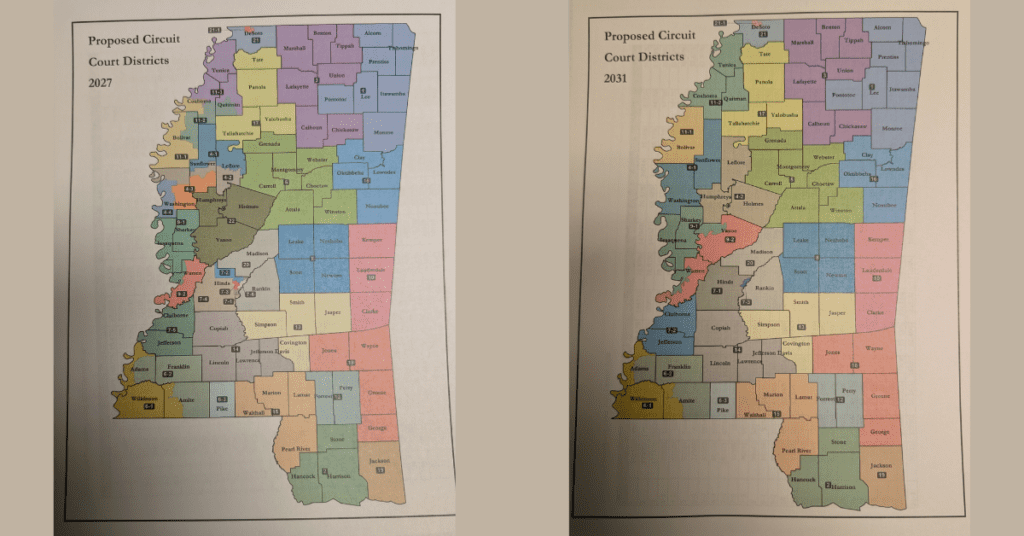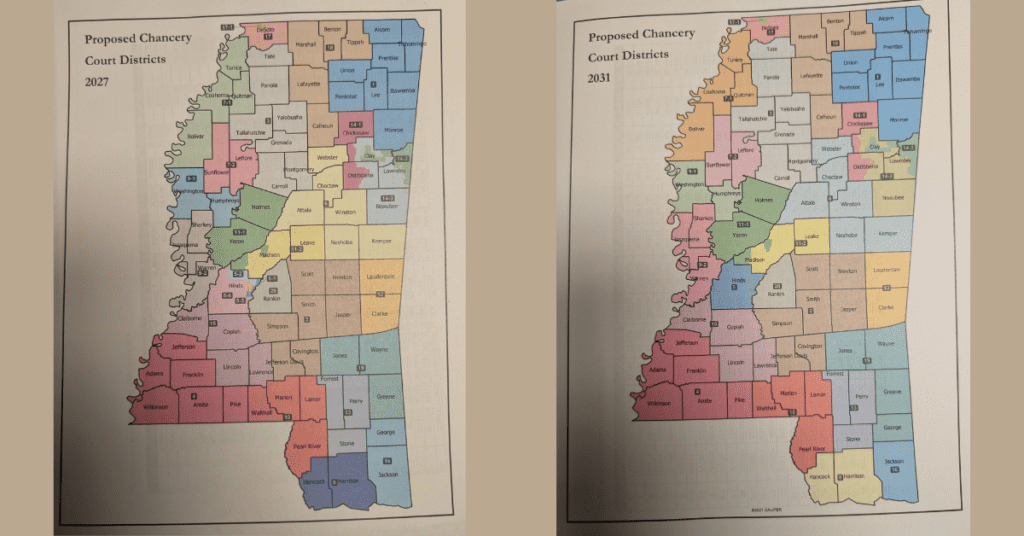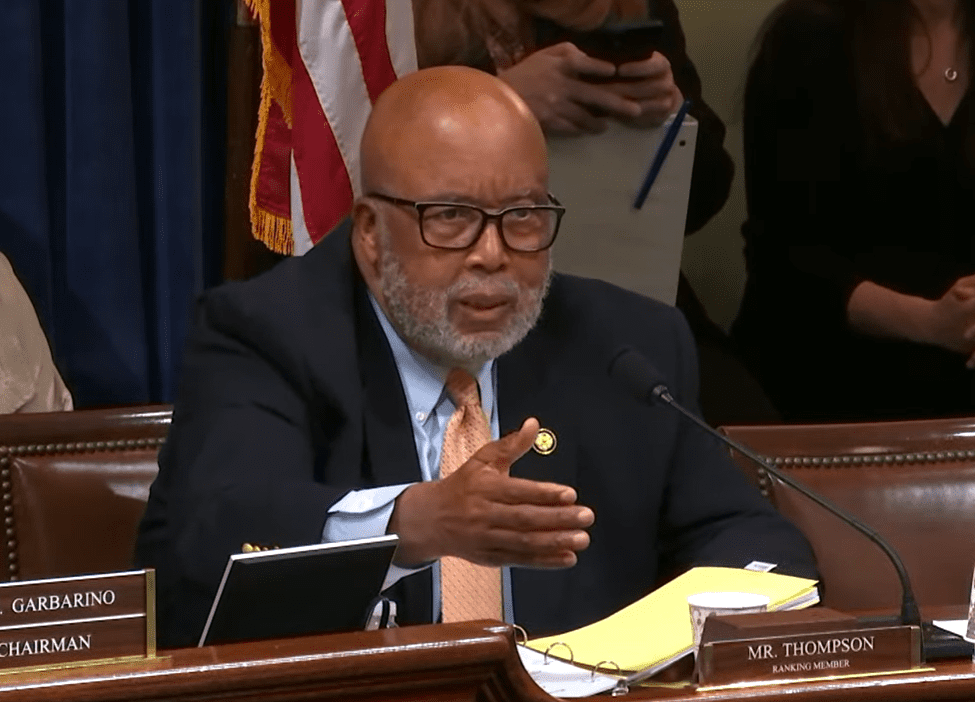
Sen. Brice Wiggins, R-Pascagoula, left, answers a question from Sen. Briggs Hopson, R-Vicksburg in the Senate Chamber, as lawmakers consider bills on their calendar, Friday, Feb. 3, 2023, at the Mississippi Capitol in Jackson. (AP Photo/Rogelio V. Solis)
- Population shifts have occurred throughout the state over the last decade, particularly out of the Delta and into South Mississippi.
Lawmakers were under a constitutional timeline to have Mississippi’s judicial redistricting of circuit and chancery court districts completed by this year, the fifth year after the most recent U.S. Census.
Senate Judiciary A Chairman Brice Wiggins (R) sought to be ahead of the deadline by authoring legislation in the 2024 session to tackle the issue. However, the House did not take up the measure, choosing instead to handle it during this year’s session.
Both chambers passed their own judicial redistricting plans, largely down party lines, and the final details were hashed out in conference prior to the end of the 2025 session last week.
Wiggins told Magnolia Tribune on Thursday that generally speaking, lawmakers accomplished the parameters they set out to achieve, such as:
- No single county, single judge districts.
- Each district is to have at least two judges on the circuit and chancery side.
- Rearranged the districts to represent the current and anticipated population growth.
- Sought to help rural districts.
- Required court to occur on at least a monthly basis in each county.
Under the legislation, the new circuit and chancery court district lines will be phased in between 2027 and 2031 depending on the district.


The Coast senator also said that in addition to the data related to factors such as population shifts, caseloads, and geographic boundaries, lawmakers took into account comments from their colleagues, judges and court personnel where changes were being considered.
Population shifts have occurred throughout the state, particularly out of the Delta and into South Mississippi.
“Pearl River, Lamar, and Forrest counties are some of the fastest growing areas and they were all in one district skewing the caseload numbers,” Wiggins said, noting that those areas were addressed accordingly with Marion and Walthall counties to balance the districts in the Pine Belt.
Currently in Mississippi, there are 23 circuit court districts with 57 judges, and 20 chancery courts and 52 judges.
“We had to collapse some districts and District Attorneys, particularly in the Delta, to achieve the requisite numbers,” Wiggins described, going on to outline the increased number of judges. “There’s a net +6 judges in circuit in 2027 and net +5 in 2031. In chancery, there’s a net +4 judges between 2027 and 2031.”
The Delta lost a net of 3 judges after experiencing a population decline of nearly 20 percent over the past decade.
Other areas of note addressed in the judicial redistricting plan approved by lawmakers include:
- DeSoto County picked up a majority-minority district in circuit court.
- Jackson County will have its own standalone circuit district in 2027 as George and Greene counties become part of a district that includes Jones and Wayne counties.
- Jackson County’s chancery district will include George County in 2027 but then George County moves up to a district with Jones, Wayne, and Greene counties to match the circuit district in 2031.
- Pike County joins the Southwest counties to create congruence between circuit and chancery districts.
- Stone County moves into a chancery district with Forrest and Perry counties.
The new boundaries get to as close to 100,000 to 120,000 people per district while maintaining at least two judges per district as possible, Wiggins said.
Senator Wiggins also said Assistant District Attorneys were added in various districts to accommodate the changes.
Given the opposition expressed by the Democratic caucus in both chambers along with outside groups such as the ACLU in Mississippi, the judicial redistricting plan could face a legal challenge similar to what has transpired with legislative redistricting.
Earlier this session, the ACLU-MS voiced opposition to Wiggins’ legislation, saying the plan would result in fewer black judges and district attorneys. The group took a similar stance in 2024 when they spoke against the Senate plan, claiming that it would have reduced the number of opportunities black voters have to elect judges or District Attorneys of their choice.
Prior to conference with the House, Senator Wiggins told Magnolia Tribune that the final judicial redistricting plan will have not only met the Legislature’s constitutional duty but will have created a plan that provides all Mississippians a representative and efficient court system.
“I wish I could say every single person would be satisfied but that’s not being realistic when dealing with statewide issues of this magnitude,” he said.
The final versions of SB 2768 (chancery) and HB 1544 (circuit) have now been sent to the Governor.










